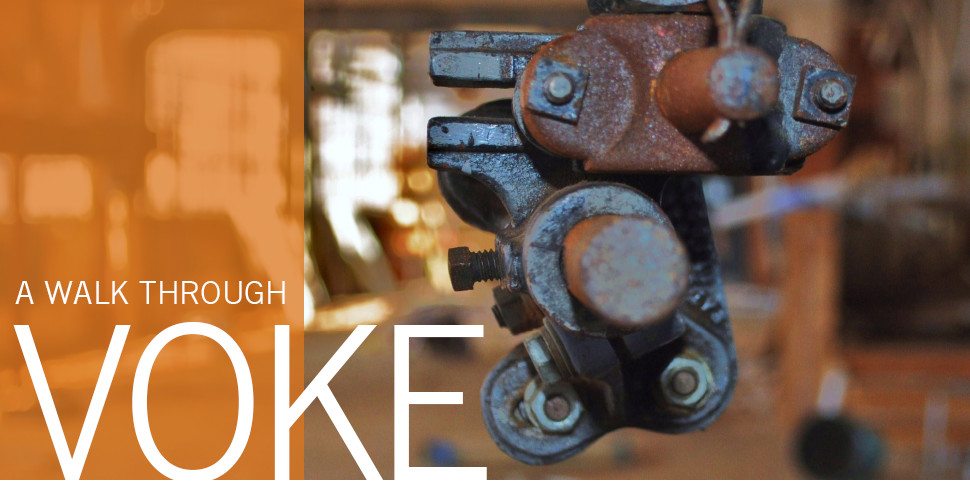
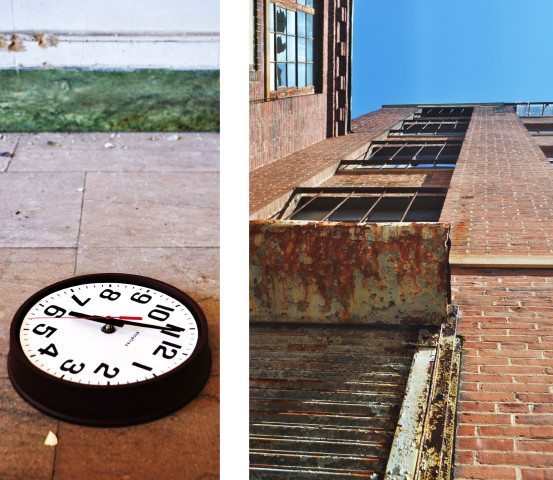
A WALK THROUGH VOKE
Referred to by locals as “The Voke,” Worcester Vocational High School was one of the first vocational institutions in the region and in the country. The Voke opened in 1909 with 52 students with instruction in ten trades including: machinery, carpentry, cabinetmaking, power plant, pattern-making, printing, electrical work, drafting, painting and decorating.
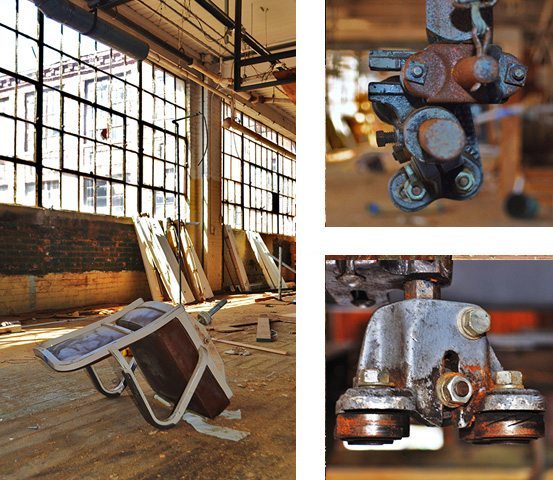
A WALK THROUGH VOKE
Once bustling with students, The Voke closed in 2006 and became a refuge for squatters, vandalism, and the defunct structure became a part of city’s urban decay – a deteriorating and visual barrier to Worcester. But signs of its former liveliness abounded – graffitied lockers, overturned chairs, scattered tools and magnificent machinery – all significant artifacts of a life gone by.

A WALK THROUGH VOKE
As a part of the economic reinvention of Worcester, MA, The Voke has been transformed into Voke Lofts, the residential component of the city’s Gateway Park Master Plan aimed to redevelop a 55-acre brownfield district that will provide much needed quality, affordable multifamily housing. Listed on the National Register of Historic Places, the building represents an excellent example of Classical Revival style institution architecture in the city.
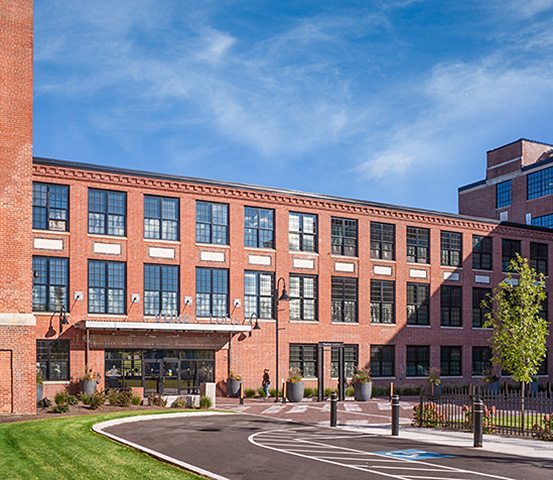
A WALK THROUGH VOKE
TAT has an incredible legacy of preserving the architectural heritage of New England and there is no substitute for experiencing these landmarks firsthand. The team ensured that the transformation of The Voke retained its industrial look and preserved its architectural integrity. This is characterized by proper restoration of the exterior masonry, preservation of the concrete entablature which reads “WORCESTER BOYS TRADE SCHOOL”; 312 historic replica windows, retaining high brick walls, exposed wood beam ceilings and piping; while incorporating sustainable features to make the building LEED Certifiable.
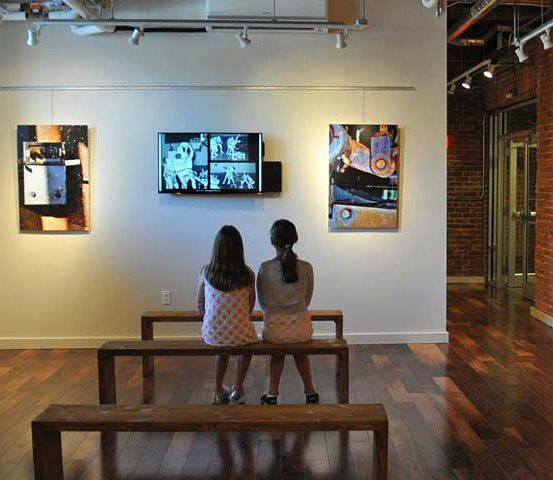
A WALK THROUGH VOKE
Repurposing historic buildings, like Voke Lofts, is a means of awakening their spirit and introducing them to a new generation so they can be remembered as a tangible part of the lives of those who labored, learned, convalesced, and worshiped within them. An art gallery on the main level features work by students at the current Worcester Technical High School as well as historic pieces from the school’s past.
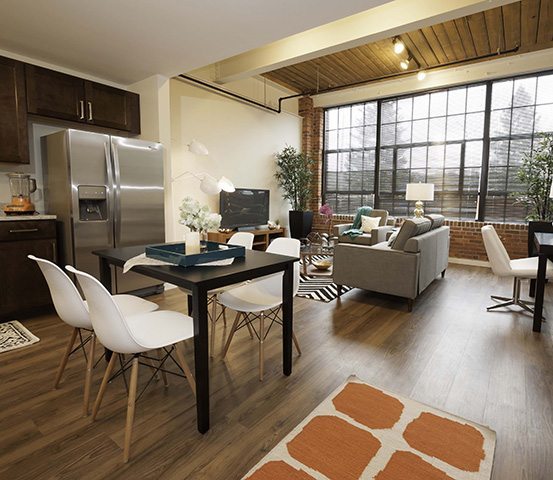
A WALK THROUGH VOKE
The renovation of The Voke has been part of a renaissance for the community, helping not only the City but also the State’s continued championing of restoring its historic buildings, while also helping to distinguish itself as a desirable and affordable place to live. The development team’s combined vision preserved the historic character and rich history of Voke Lofts while taking advantage of modern construction and amenities; and offers residents the benefits of urban living—close to downtown areas and public transportation.
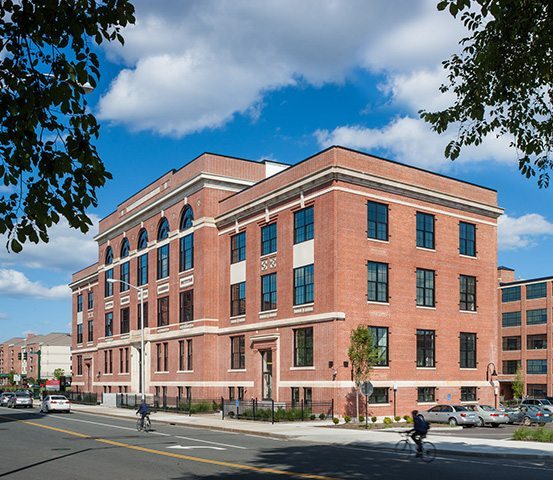
A WALK THROUGH VOKE
“The restoration and rehabilitation of The Voke school has strengthened the area’s unique historic identity for years to come, and is a focal point to the continued build out of Gateway Park.”
- Harriette L. Chandler, State Senator, 1st Worcester District
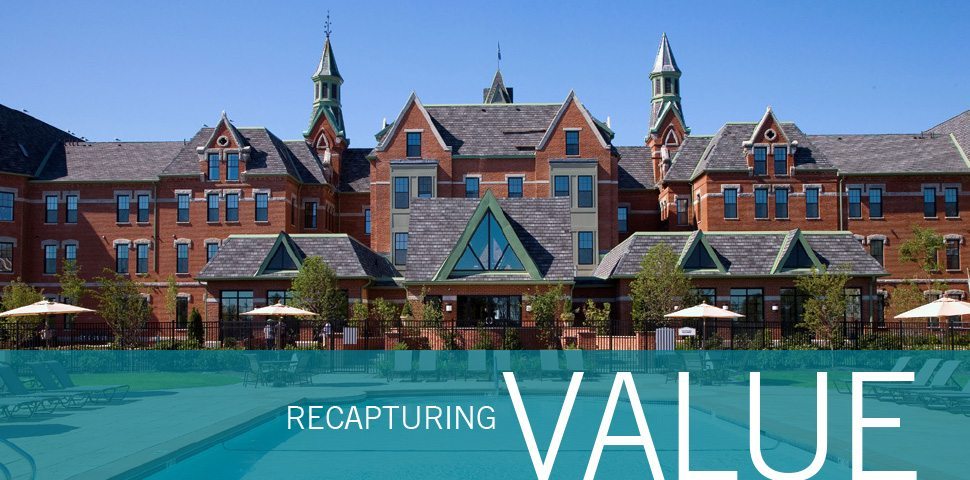
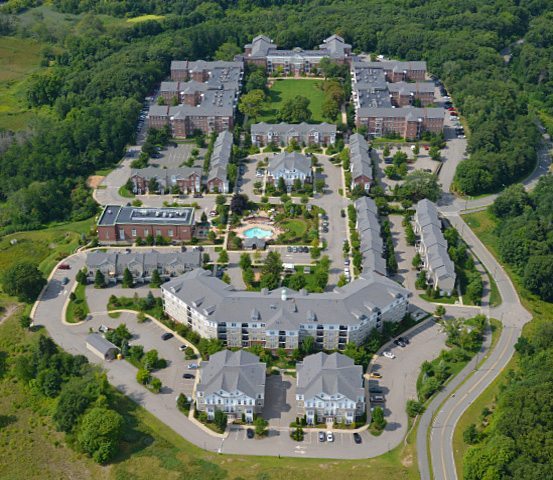
RECAPTURING VALUE
Former state mental hospitals seem unlikely catalysts for master planned community development and economic growth. Yet these idle historic assets and the land they occupy have often become the linchpin for upgrading and stabilizing neighborhoods. Recent examples of large-scale historic reuse, many with new mixed-use components, affordable housing and senior living units, have highlighted the valuable role they can play in creating master planned communities.
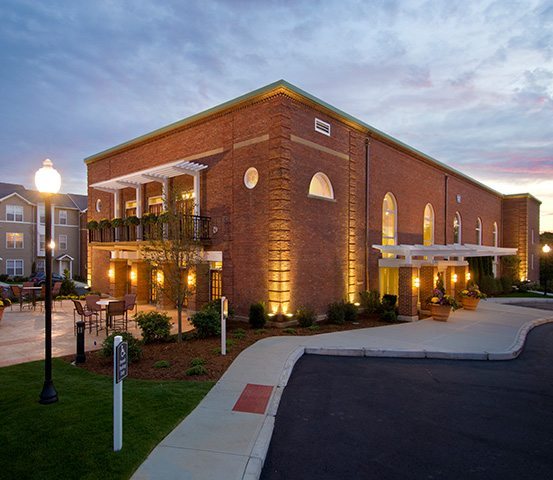
RECAPTURING VALUE
The key? Unlock hidden underlying value. Urban revitalization tends to strike a deep emotional chord within a community. A defunct hospital, for example – once a proud center of vibrant and meaningful activity – becomes a lightning rod of local pride. By repurposing the building as the centerpiece of revitalization strategy, we create a win-win for the community and the developer – celebrating the area’s rich heritage.
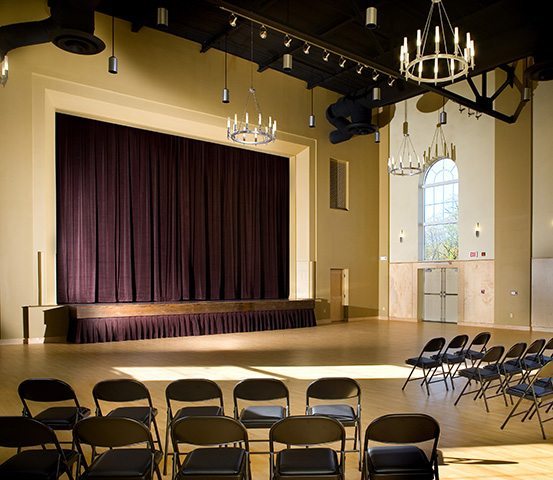
RECAPTURING VALUE
Our experience with shuttered state mental hospitals and similar institutions is a successful working model of making derelict turn-of-the-century eyesores into the catalyst and cornerstone of a large-scale, thriving master planned community.
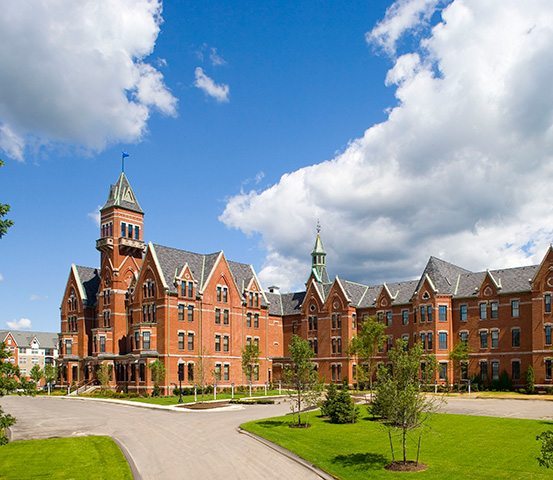
RECAPTURING VALUE
In Danvers, MA, we converted an 1878 sanitarium after it sat idle for more than 10 years. It was reopened with its preserved iconic Victorian-Gothic facades and 433 new apartments on a 77-acre swath. Avalon at Lexington Hills was built on the former Metropolis State Hospital site in Lexington, MA, and generates about $53 million from 390 apartments. Both projects have injected vitality and an economic boost to their local communities and offer the ultimate in convenience, service, and amenities.
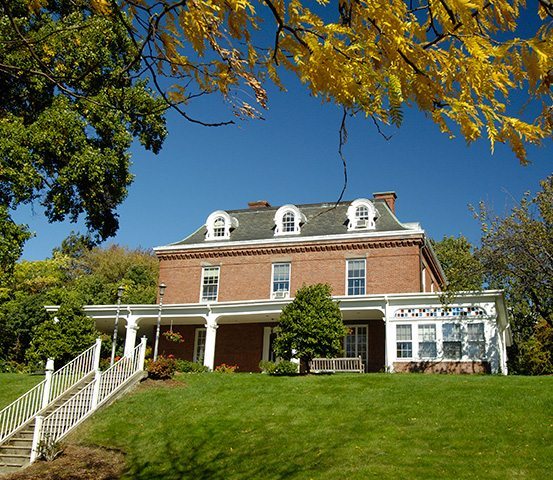
RECAPTURING VALUE
Less than five miles from downtown Boston, the redevelopment of Admirals Hill in Chelsea, MA, overlooking the Mystic River transformed a former naval hospital and barracks as well as historic officer’s homes into a gated, mixed-income community. More than 1,000 residences share access to a riverfront park, yacht club, and one of New England’s largest supermarkets. It unified what was formerly a disjointed neighborhood into an integrated, diverse and thriving community.
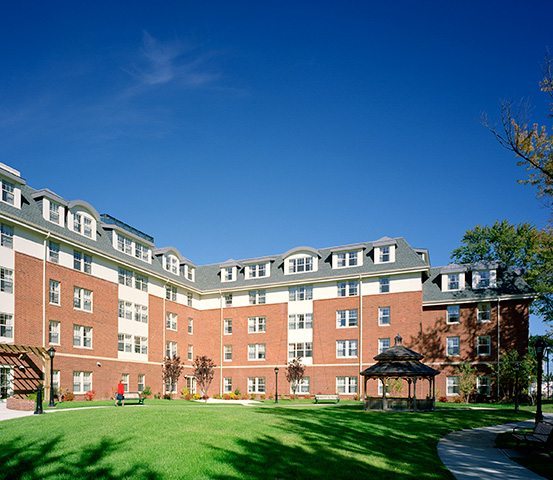
RECAPTURING VALUE
St. John of God, a development centered on an abandoned hospital campus on a prestigious tract on the border of Brookline, MA, was converted into a 5.52-acre continuum-of-care senior campus. Among the new facilities is a hospice, 83 independent-living market rate senior apartments, 102 affordable assisted-living units, a skilled-nursing facility with 78 beds, and 24 hospice apartments. The result revitalized an entire neighborhood from a single, abandoned hospital.
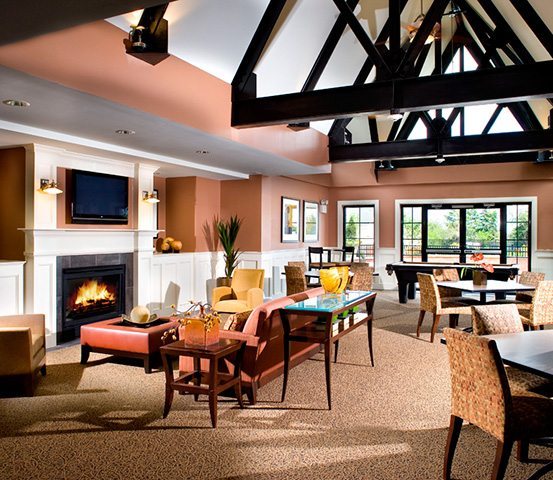
RECAPTURING VALUE
By creating affordable or market-rate housing and by stabilizing and upgrading neighborhoods, we recapture value from historic assets and engage a community’s history, people, and institutional memory. The changes stimulate environmental benefits, as citizens are able to finds goods, services, work and leisure closer to home, and – when well-crafted – master plans for renewal projects bring such silent benefits as renewed community pride.

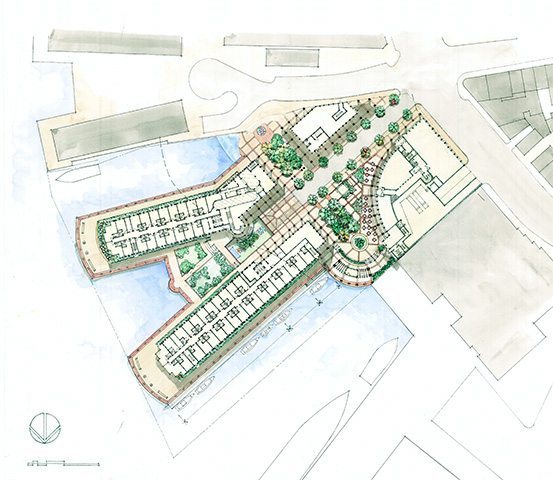
BUILDING BATTERY WHARF
More than 200 years ago, Battery Wharf was the launching point for British soldiers, who rowed from the pier across Boston Harbor to Charlestown to fight the Battle of Bunker Hill. One of the oldest and most historic piers in Boston is now one of Boston’s most exciting and luxurious waterfront developments.
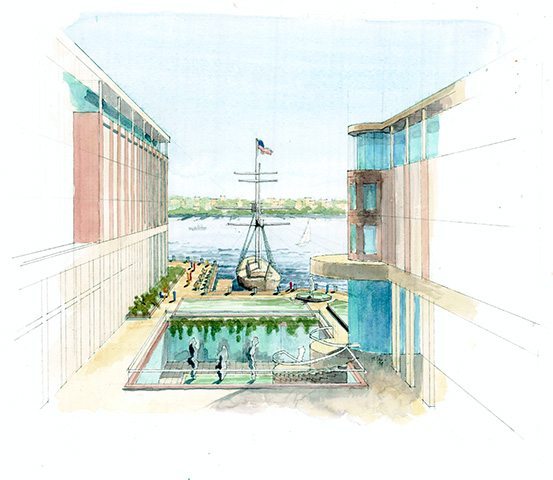
BUILDING BATTERY WHARF
The development of Battery Wharf presented a complex series of relationships to be resolved. Constructing a project on a pier over water and dry land is among the most interesting of these. The wharf’s ground-level needed to align with the gradient of the North End’s Commercial Street, sit above high tide and the height of a possible storm surge, rest atop an existing sea wall – a handmade artifact of granite blocks dating from the late 1800s and provide Harbor Walk pedestrians desired proximity to the water.
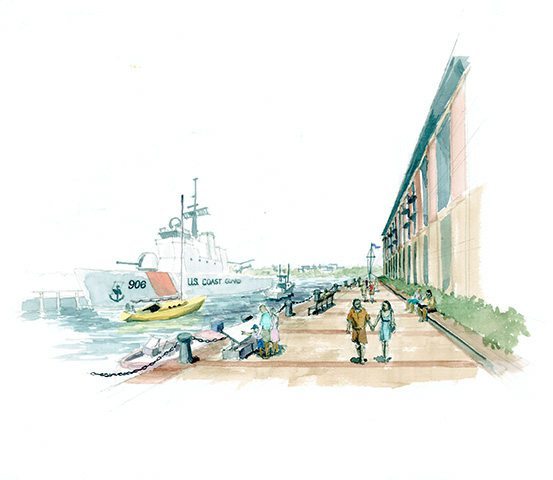
BUILDING BATTERY WHARF
The programming of a mixed-used development located on the North End waterfront, a site governed by Chapter 91 licensing restrictions that limit building height, area, and use proved to be another building challenge. Chapter 91 mandated that the first floor be devoted exclusively to “uses of public accommodation,” and its open space provisions required the creation of a 70,000 square foot public plaza allowing for pedestrian access to the waterfront.
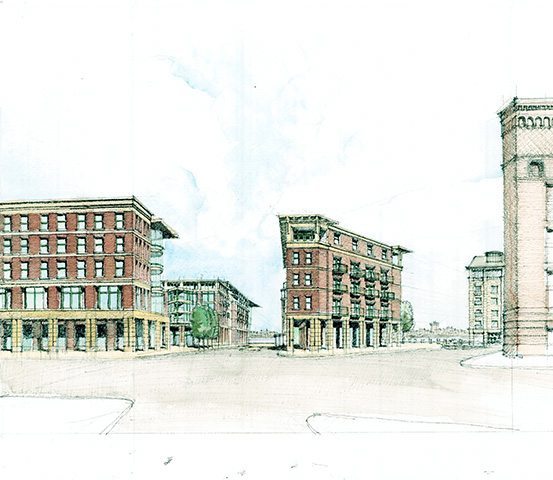
BUILDING BATTERY WHARF
In order to preserve and continue the street pattern of the surrounding neighborhood, the project was divided into four separate buildings, all served below grade by an extensive underground complex of hotel function rooms, support space and garage.
Hotel and retail uses, which are considered “uses of public accommodation”, were located on the first floor of each building. The below grade structure is essentially an invisible fifth building, the square footage of which is greater than three of the four above-grade buildings.
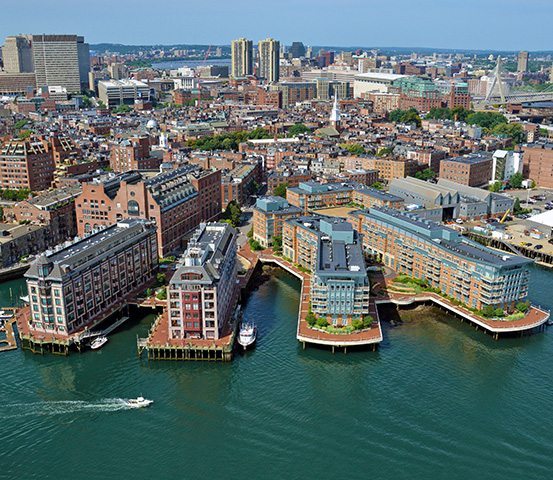
BUILDING BATTERY WHARF
At five and six stories, these four buildings extend the scale and urban pattern of the streets on the landward side of Commercial Street, while maintaining the finger wharf pattern common along the harbor waterfront. This response maximizes the public nature of the site plan, and with the addition of a museum, public educational exhibits and water taxi shelter, overtly extends the public realm to the water.
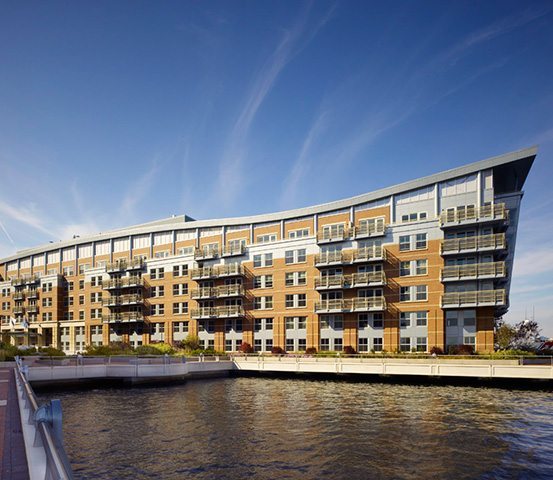
BUILDING BATTERY WHARF
The buildings’ architecture provides a modulated response to context. The two buildings facing the North End residential neighborhoods are more faithful to the North End architectural vocabulary of flat-front façades and punched windows. Once inside the site, the building vocabulary evokes an understated maritime sensibility expressed most predominantly by the prow-like eastern ends of the two pier buildings, which have cantilevered bays, and the wave-like form of building 3’s undulating roof line. Nautical metaphors appear throughout the site in the form of other details.
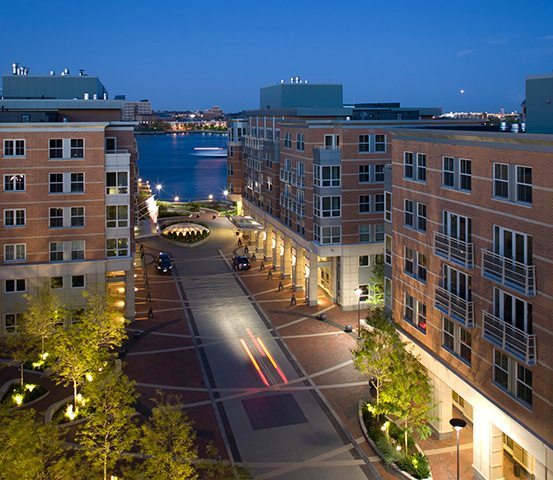
BUILDING BATTERY WHARF
Encompassing a 4.5 acre site, Battery Wharf includes 104 luxury condominiums, of which 80 percent have waterfront views, while others face the USS Constitution and Bunker Hill Monument. In addition to the condominiums, the development includes a 150-room luxury hotel, 40,000 square feet of retail space, a spa and fitness center, restaurant, a Maritime Museum, 300-foot boat dock and is an extension of Boston’s Harbor Walk. The development is one of several local projects that pairs high-end residences with luxury hotels, allowing residents access to unparalleled amenities.
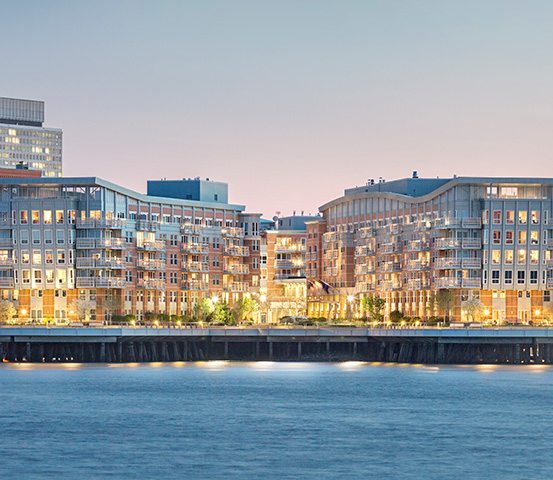
BUILDING BATTERY WHARF
“Battery Wharf is an outstanding example of architectural design excellence that will stand the test of time.”
- Harold Theran, VP/Developer, Development Management Corporation

